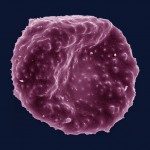Lien vers Pubmed [PMID] – 24768682
Infect. Genet. Evol. 2014 Jul;25:81-92
In placental malaria (PM), sequestration of infected erythrocytes in the placenta is mediated by an interaction between VAR2CSA, a Plasmodium falciparum protein expressed on erythrocytes, and chondroitin sulfate A (CSA) on syncytiotrophoblasts. Recent works have identified ID1-DBL2Xb as the minimal CSA-binding region within VAR2CSA able to induce strong protective immunity, making it the leading candidate for the development of a vaccine against PM. Assessing the existence of population differences in the distribution of ID1-DBL2Xb polymorphisms is of paramount importance to determine whether geographic diversity must be considered when designing a candidate vaccine based on this fragment. In this study, we examined patterns of sequence variation of ID1-DBL2Xb in a large collection of P. falciparum field isolates (n=247) from different malaria-endemic areas, including Africa (Benin, Senegal, Cameroon and Madagascar), Asia (Cambodia), Oceania (Papua New Guinea), and Latin America (Peru). Detection of variants and estimation of their allele frequencies were performed using next-generation sequencing of DNA pools. A considerable amount of variation was detected along the whole gene segment, suggesting that several allelic variants may need to be included in a candidate vaccine to achieve broad population coverage. However, most sequence variants were common and extensively shared among worldwide parasite populations, demonstrating long term persistence of those polymorphisms, probably maintained through balancing selection. Therefore, a vaccine mixture including such stable antigen variants will be putatively applicable and efficacious in all world regions where malaria occurs. Despite similarity in ID1-DBL2Xb allele repertoire across geographic areas, several peaks of strong population differentiation were observed at specific polymorphic loci, pointing out putative targets of humoral immunity subject to positive immune selection.

